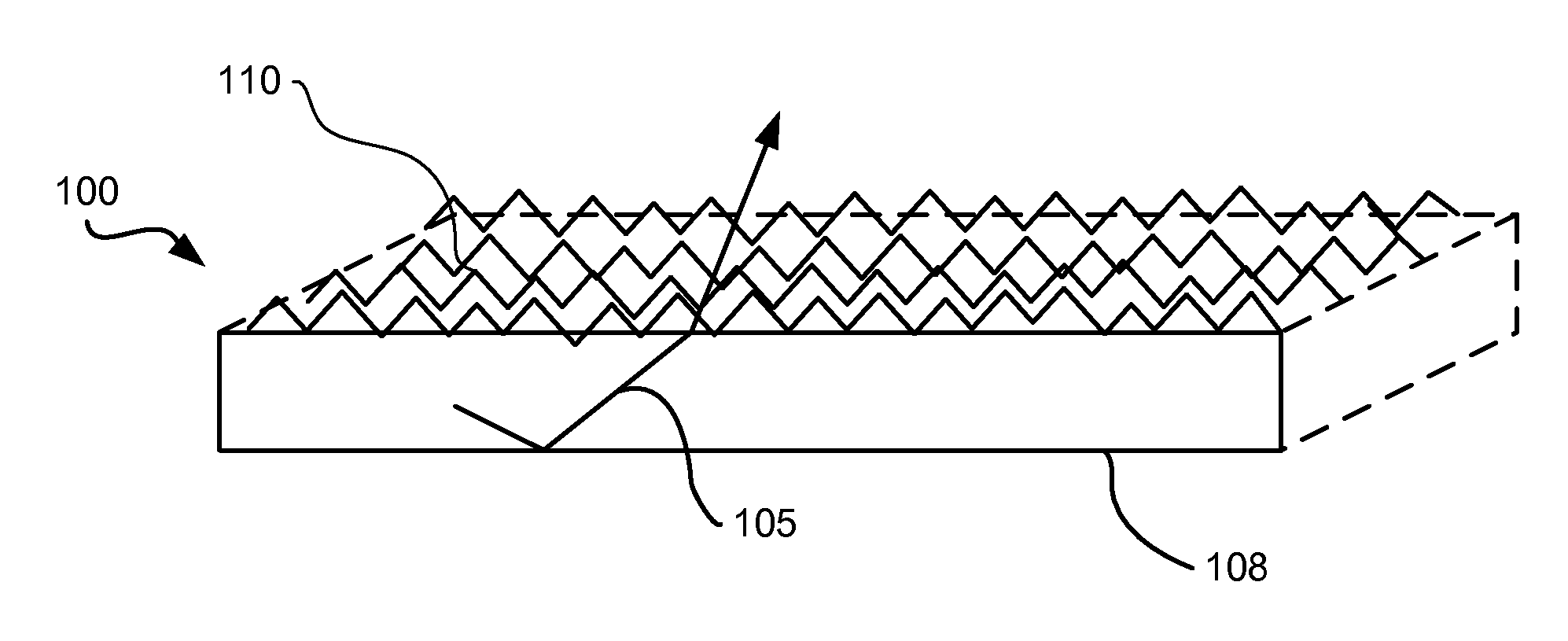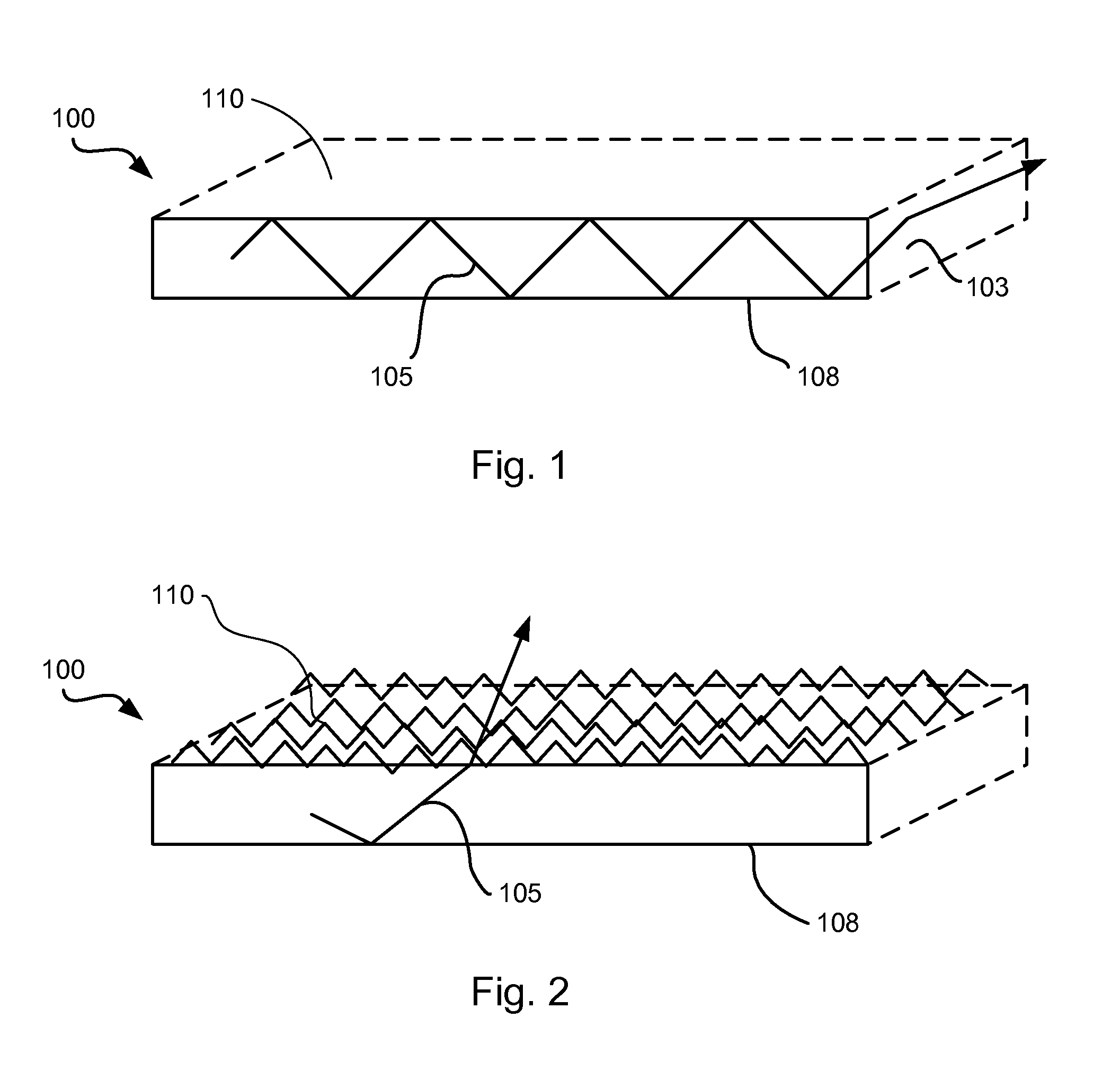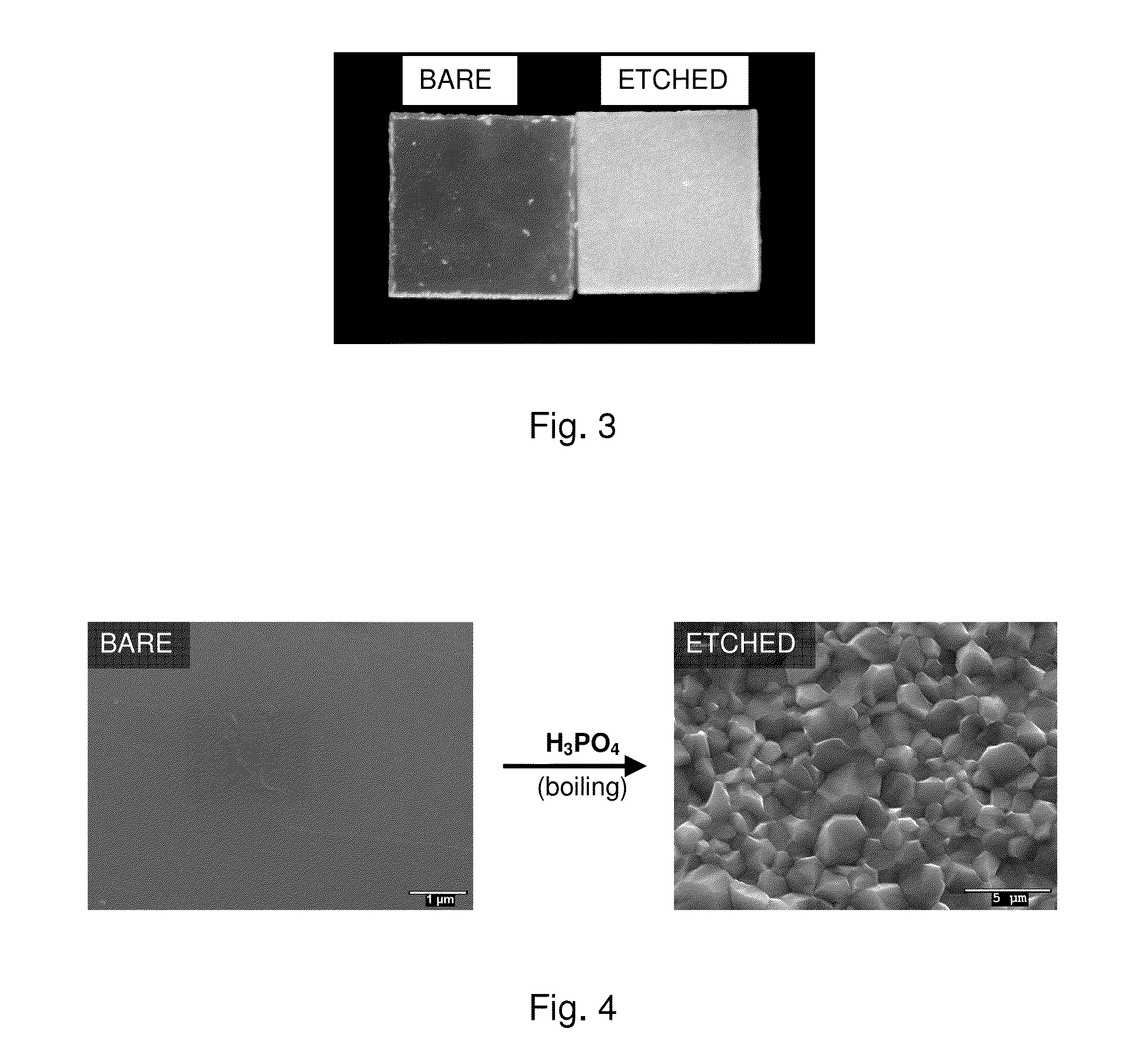Method for Etching a Ceramic Phosphor Converter
a technology of phosphor converter and ceramic, which is applied in the direction of semiconductor devices, chemistry apparatus and processes, and light-emitting compositions. it can solve the problems of reducing optical efficiency, reducing the efficiency of etching, and emitted light at each point in the ceramic at angles larger than the total internal reflection (tir) critical angle, so as to increase the ratio of forward-to-side emitted light, increase overall lumen output, and increase forward lumen output
- Summary
- Abstract
- Description
- Claims
- Application Information
AI Technical Summary
Benefits of technology
Problems solved by technology
Method used
Image
Examples
Embodiment Construction
[0011]For a better understanding of the present invention, together with other and further objects, advantages and capabilities thereof, reference is made to the following disclosure and appended claims taken in conjunction with the above-described drawings.
[0012]In general, the refraction of light at the interface between two different substances is governed by Snell's Law. With reference to FIG. 1, a flat ceramic converter plate 100 is shown. In a phosphor conversion LED application, the converter 100 would be positioned such that its bottom surface 108 would face the LED and light emitted by the LED would enter the converter 100 through its bottom surface 108. In the embodiment shown in FIG. 1 the converter has a primary light emitting surface 110 which is substantially smooth. A light ray 105 within the converter is subject to TIR and may be reflected several times within the converter to be emitted out a side of the converter 103 rather than from the primary light emitting surf...
PUM
| Property | Measurement | Unit |
|---|---|---|
| depths | aaaaa | aaaaa |
| boiling | aaaaa | aaaaa |
| energy losses | aaaaa | aaaaa |
Abstract
Description
Claims
Application Information
 Login to View More
Login to View More - R&D
- Intellectual Property
- Life Sciences
- Materials
- Tech Scout
- Unparalleled Data Quality
- Higher Quality Content
- 60% Fewer Hallucinations
Browse by: Latest US Patents, China's latest patents, Technical Efficacy Thesaurus, Application Domain, Technology Topic, Popular Technical Reports.
© 2025 PatSnap. All rights reserved.Legal|Privacy policy|Modern Slavery Act Transparency Statement|Sitemap|About US| Contact US: help@patsnap.com



